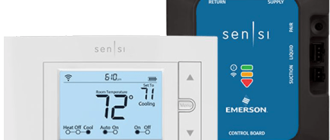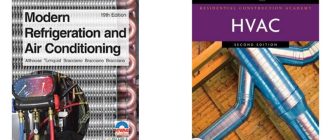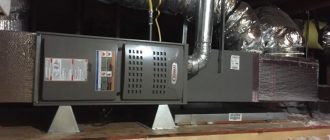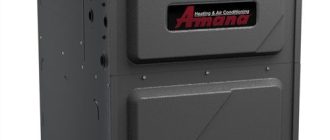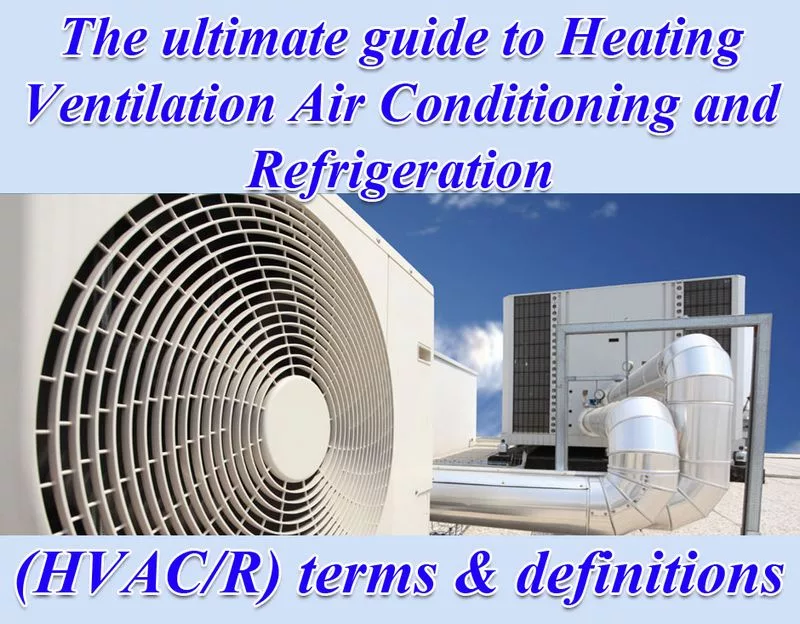
HVAC Terminology Explained: A Comprehensive Glossary for Beginners
Welcome to our comprehensive glossary of HVAC terminology explained! If you are just starting out in the world of heating, ventilation, and air conditioning, this article is perfect for you. We understand that the HVAC industry is full of technical jargon that can be confusing for beginners. That’s why we have created this glossary to help you navigate through the complex terminology and understand the key concepts.
Whether you are a homeowner looking to upgrade your HVAC system or a student studying to become an HVAC technician, having a good understanding of the terminology is essential. This comprehensive glossary covers everything from basic HVAC terms to more advanced concepts, ensuring that you have a solid foundation.
In this glossary, you will find terms such as BTU (British Thermal Unit), SEER (Seasonal Energy Efficiency Ratio), HVACR (Heating, Ventilation, Air Conditioning, and Refrigeration), and many more. Each term is explained in simple language, making it easy for beginners to comprehend. We have also included examples and illustrations to further enhance your understanding.
By familiarizing yourself with these HVAC terms, you will be able to communicate more effectively with HVAC professionals, understand product specifications, and make informed decisions regarding your HVAC system. So whether you are looking to install a new HVAC system, troubleshoot an issue, or simply expand your knowledge, this glossary is the ultimate resource for beginners.
Explore our HVAC terminology glossary now and gain the knowledge you need to become confident in discussing and understanding the world of HVAC!
HVAC Basics: A Beginner’s Guide to HVAC Systems – [Website Name]
Welcome to our beginner’s guide to HVAC systems! Whether you are a homeowner or a business owner, understanding the basics of HVAC is essential. In this guide, we will provide you with an overview of HVAC systems, explaining key concepts and terminology along the way.
Before we delve into the nitty-gritty details, let’s start with some common HVAC terms you need to know:
- Glossary: A comprehensive list of HVAC terms and their definitions, helping you understand the language of HVAC professionals.
- Beginners: This guide is aimed at individuals who are new to HVAC or have limited knowledge about HVAC systems.
- HVAC: Short for Heating, Ventilation, and Air Conditioning, HVAC refers to the technology and systems used for indoor comfort and air quality control.
- Explained: Throughout this guide, we will explain various concepts, components, and processes related to HVAC systems.
- Comprehensive: Our guide aims to cover a wide range of topics to give you a complete understanding of HVAC systems.
Now that we have covered these important terms, let’s dive into the world of HVAC systems. We will explore the different types of HVAC systems, their components, and how they work together to ensure comfort and efficiency in your space. We will also discuss the importance of regular HVAC maintenance and energy-saving tips.
Whether you are considering installing a new HVAC system, troubleshooting an existing one, or simply want to expand your knowledge, this guide will provide you with a solid foundation. Let’s get started!
HVAC System
The HVAC system, which stands for Heating, Ventilation, and Air Conditioning, is a comprehensive term that encompasses all the components and systems used to provide heating, cooling, and ventilation to a building. It is an essential part of any residential, commercial, or industrial structure, ensuring comfortable and healthy indoor air quality.
The HVAC system includes various equipment and technologies that work together to regulate temperature, control humidity, filter and purify air, and distribute it throughout a building. These components can be broadly categorized into three main sections:
- Heating: This part of the HVAC system involves equipment that generates heat, such as furnaces, boilers, heat pumps, and electric heaters. It is responsible for maintaining a comfortable temperature during colder seasons.
- Ventilation: Ventilation refers to the process of exchanging indoor and outdoor air to maintain fresh air quality and control moisture levels. It involves mechanical devices like fans, ducts, and exhaust systems that remove stale air and bring in fresh air.
- Air Conditioning: Air conditioning is responsible for cooling the indoor air during hot weather. It uses devices like refrigeration systems, chillers, and air conditioners to remove heat and humidity from the air, providing a more comfortable environment.
Additionally, the HVAC system may also include other components like thermostats, controls, sensors, filters, and ductwork to regulate and monitor the overall system performance. Proper installation, maintenance, and regular servicing are crucial to ensure the HVAC system operates efficiently, effectively, and safely.
This glossary provides a comprehensive explanation of HVAC terminology and aims to help beginners understand the various concepts and terms associated with HVAC systems. It is an invaluable resource for anyone looking to familiarize themselves with the industry and gain a better understanding of HVAC technology.
Thermostat
Thermostat is a key component of HVAC systems and plays a vital role in maintaining the desired indoor temperature. In simple terms, it is a device that helps control the heating, ventilation, and air conditioning. For beginners in the HVAC world, understanding the thermostat’s functionality is crucial to effectively manage indoor comfort.
A thermostat acts as a control panel for adjusting the temperature based on the desired settings. It measures and senses the room temperature and compares it to the setpoint temperature. If there is a variation between the actual temperature and the desired temperature, the thermostat signals the HVAC system to take appropriate action.
There are various types of thermostats available, ranging from basic to advanced models. The most common types are mechanical thermostats, programmable thermostats, and smart thermostats. Each type has its own features and benefits, catering to different needs and preferences.
Mechanical thermostats are the traditional types with manual controls. They consist of a simple dial or lever for adjusting the temperature settings. While they are relatively easy to use, they lack advanced programming features and energy-saving capabilities.
Programmable thermostats, on the other hand, offer more flexibility and energy efficiency. They allow users to pre-set temperature schedules based on their daily routines. This helps to optimize energy usage by automatically adjusting the temperature when the occupants are away or asleep.
Smart thermostats are the latest innovation in the HVAC industry. They offer advanced features such as Wi-Fi connectivity, smartphone integration, and learning capabilities. Smart thermostats can be controlled remotely through mobile apps, providing users with greater convenience and control over their HVAC systems.
Understanding the terminology associated with thermostats is essential for beginners in the HVAC field. Some common terms include temperature setpoint, swing, differential, and hysteresis. These terms refer to the temperature range within which the thermostat operates and helps maintain a comfortable indoor environment.
In conclusion, a thermostat is a vital component of HVAC systems, allowing users to control the indoor temperature effectively. Beginners in the HVAC world should familiarize themselves with thermostat functionality and related terminology to ensure proper temperature management and energy efficiency.
Air Conditioning
In the world of HVAC (Heating, Ventilation, and Air Conditioning), air conditioning plays a crucial role in maintaining a comfortable indoor environment. For beginners just starting to learn about HVAC systems, it’s important to understand the terminology related to air conditioning.
Air conditioning refers to the process of cooling and dehumidifying the air inside a building or a space. It is achieved by removing heat and moisture from the air, resulting in a more comfortable and pleasant environment.
The HVAC system consists of various components that work together to provide air conditioning. These components include the condenser, evaporator, compressor, and expansion valve. Each component has a specific function in the cooling process.
The condenser is responsible for releasing the heat absorbed from the indoor air to the outside. It uses a fan and a coil to remove heat and condense the refrigerant back into a liquid state.
The evaporator is where the heat and moisture from the indoor air are absorbed. It cools the air and removes the humidity, resulting in a more comfortable environment. The cooled air is then distributed through the supply ducts.
The compressor is the heart of the air conditioning system. It is responsible for compressing the refrigerant and increasing its pressure, which raises its temperature. This hot and highly pressurized refrigerant then flows to the condenser.
The expansion valve controls the flow of the refrigerant between the evaporator and the condenser. It regulates the pressure and temperature of the refrigerant, allowing for efficient cooling.
There are different types of air conditioning systems, such as central air conditioning and ductless mini-split systems. Central air conditioning systems use ducts to distribute cooled air throughout a building or a series of rooms. Ductless mini-split systems, on the other hand, provide individual cooling units for different zones or rooms without the need for ductwork.
Understanding the key terms and components related to air conditioning is essential for beginners in the HVAC field. With this glossary, you can navigate the world of air conditioning and gain a better understanding of how HVAC systems work.
Heating
As part of our comprehensive glossary of HVAC terminology, we have explained the key concepts and terms related to heating in this section. HVAC stands for Heating, Ventilation, and Air Conditioning, and it encompasses all the systems and technologies used to control indoor temperature and air quality.
Heating is a crucial component of HVAC systems, as it provides warmth and comfort to buildings during colder months. Below, you will find a list of important heating-related terms and their explanations:
| Term | Explanation |
|---|---|
| Thermostat | A device that controls the temperature of a system by turning it on or off based on preset temperature settings. |
| Furnace | A heating unit that uses a fuel source, such as gas or oil, to produce warm air that is distributed throughout a building. |
| Heat pump | A device that transfers heat from one location to another using electricity. It can provide both heating and cooling. |
| Radiant heating | A heating system that uses radiant energy to warm objects and people directly, rather than heating the air. |
| Boiler | A heating appliance that uses water or steam to distribute heat throughout a building. |
| Baseboard heater | An electric heating unit installed along the baseboard of a room that provides localized heat. |
| Ductwork | A system of ducts used to distribute heated air throughout a building. |
| Radiator | A device that transfers heat from a fluid-filled chamber to the surrounding air, usually found in older buildings. |
This glossary of heating terms will help beginners understand the basics of HVAC systems and make informed decisions when it comes to heating their homes or buildings.
Ventilation
Ventilation is an important aspect of HVAC systems. It is the process of bringing fresh air into a closed space and removing stale air, odors, and pollutants. Ventilation helps in maintaining indoor air quality and creating a comfortable environment for occupants.
There are various types of ventilation systems used in HVAC. Some common types include:
| Natural Ventilation | In natural ventilation, fresh air enters a space through windows, doors, or openings, and stale air exits through exhaust vents or chimneys. |
| Mechanical Ventilation | Mechanical ventilation involves the use of fans or blowers to bring in fresh air and remove stale air. It can be controlled and regulated based on the specific requirements of the space. |
| Exhaust Ventilation | Exhaust ventilation systems focus on removing stale air and pollutants from the space. They usually have exhaust fans or vents that expel air to the outside. |
| Balanced Ventilation | In balanced ventilation systems, equal amounts of fresh air are introduced and stale air is expelled. This helps in maintaining a balanced air pressure inside the space. |
Proper ventilation is essential for maintaining a healthy and comfortable indoor environment. It not only helps in removing pollutants and ensuring adequate fresh air supply but also prevents the buildup of moisture, which can lead to mold growth and other issues.
When designing HVAC systems, ventilation requirements should be carefully considered to meet the needs of the space and its occupants. Factors such as occupancy, air pollution levels, and local regulations should be taken into account to determine the appropriate ventilation strategy.
By understanding different ventilation concepts and systems, beginners can gain a comprehensive knowledge of HVAC terminology and make informed decisions when it comes to heating, cooling, and air quality in buildings.

Ductwork
In the world of HVAC, ductwork refers to the system of ducts used to distribute air throughout a building. It plays a crucial role in maintaining indoor air quality and ensuring the comfort of occupants.
The ductwork consists of a network of pipes or channels made from various materials such as sheet metal, fiberglass, or flexible plastic. These ducts are used to deliver cooled or heated air from the HVAC system to different rooms or areas within a building.
There are several types of ductwork, including:
- Rigid ducts: These ducts are typically made from sheet metal and are known for their durability and longevity. They are commonly used in commercial buildings.
- Flexible ducts: As the name suggests, these ducts are more flexible than rigid ducts and are often used in residential buildings where space is limited. They are made from a flexible plastic material and can be easily installed in tight spaces.
- Fiberglass ducts: These ducts are made from fiberglass duct board and are known for their insulation properties. They are commonly used in areas where thermal insulation is a priority.
Properly designed and installed ductwork is essential for the efficient operation of an HVAC system. It should be carefully planned to ensure adequate airflow to each room and minimize pressure losses. In addition, proper insulation and sealing of ducts can help prevent energy loss and improve overall system performance.
Understanding the different components and types of ductwork is essential for HVAC professionals and beginners alike. With a comprehensive glossary like this, you can easily navigate through the terminology and concepts related to ductwork and other HVAC systems.
Filters
In the HVAC world, filters play a crucial role in maintaining indoor air quality and protecting HVAC equipment. Here are some key terms related to filters:
- Air Filter: A device used in HVAC systems to remove dust, pollen, and other particles from the air before it is circulated.
- MERV: Minimum Efficiency Reporting Value. It rates the effectiveness of an air filter in capturing particles of different sizes. The higher the MERV rating, the more efficient the filter.
- HEPA Filter: High-Efficiency Particulate Air Filter. It is a type of air filter that can trap a high percentage of very small particles, including allergens and some bacteria.
- Pre-Filter: A filter designed to capture larger particles before they reach the main air filter. It helps extend the life of the primary filter and improves its overall efficiency.
- Electrostatic Filter: A type of filter that uses an electrostatic charge to trap particles. It is often washable and reusable.
- Pleated Filter: A type of air filter with pleats that increase the surface area for capturing particles.
- Activated Carbon Filter: A filter that uses activated carbon to remove odors, chemicals, and volatile organic compounds (VOCs) from the air.
- Filter Replacement: Regularly replacing air filters is essential for optimal HVAC system performance and indoor air quality. It is recommended to follow the manufacturer’s guidelines for filter replacement frequency.
Understanding these filter-related terms is important for beginners in the HVAC industry to ensure proper maintenance and efficient operation of HVAC systems.
Efficiency Ratings
In the world of HVAC, efficiency ratings are an essential part of understanding how well a system can perform. These ratings provide homeowners and professionals with valuable information about the energy efficiency and cost-effectiveness of HVAC equipment.
Efficiency ratings are typically represented as numerical values or percentages that indicate the system’s ability to convert energy into useful heating or cooling. Higher numbers or percentages are desirable, as they represent greater efficiency and lower energy consumption.
When it comes to HVAC systems, there are several different efficiency ratings to be aware of. Here are some of the most common ones:
| Rating | Description |
|---|---|
| SEER | The Seasonal Energy Efficiency Ratio (SEER) measures the cooling output of an HVAC system compared to the amount of energy it consumes. A higher SEER rating indicates better energy efficiency. |
| EER | The Energy Efficiency Ratio (EER) is similar to SEER but focuses on a specific set of conditions. It measures the cooling output divided by the power input at a constant outdoor temperature. |
| HSPF | The Heating Seasonal Performance Factor (HSPF) measures the efficiency of a heat pump during the heating season. A higher HSPF rating indicates better energy efficiency. |
| AFUE | The Annual Fuel Utilization Efficiency (AFUE) measures the efficiency of a furnace or boiler by comparing the amount of heat produced to the amount of fuel consumed. A higher AFUE rating indicates better energy efficiency. |
Understanding these efficiency ratings is crucial when selecting HVAC equipment. Higher-rated systems may have a higher upfront cost but can save money in the long run through reduced energy consumption. Additionally, they contribute to a more environmentally friendly household by reducing carbon emissions.
By familiarizing yourself with the glossary of HVAC terminology, beginners can make informed decisions about which HVAC equipment is right for their homes. Efficiency ratings are just one piece of the puzzle, but they are an important one.
SEER
SEER stands for Seasonal Energy Efficiency Ratio and is a rating system used to measure the energy efficiency of air conditioning units. It is an important term to understand for beginners in the HVAC field.
The SEER rating is calculated by dividing the cooling output of an air conditioner in British thermal units (BTUs) by the energy it consumes in watt-hours. The higher the SEER rating, the more efficient the AC unit is, meaning it can cool a space using less energy.
SEER ratings typically range from 13 to 25, with higher ratings indicating better energy efficiency. In the United States, the minimum SEER rating required for new residential air conditioning units is 14. Higher SEER ratings not only offer cost savings by reducing energy consumption but also contribute to reducing environmental impact by lowering greenhouse gas emissions.
Understanding SEER ratings can help beginners in the HVAC industry make informed decisions when choosing air conditioning units for their customers or clients. By selecting units with higher SEER ratings, they can ensure that their customers are getting more energy-efficient systems that will save them money and provide a more comfortable indoor environment.
It’s important to note that SEER ratings alone may not give a complete picture of an AC unit’s performance. Factors such as proper installation, maintenance, and ductwork also play a significant role in overall energy efficiency and cooling capabilities.
AFUE
The AFUE (Annual Fuel Utilization Efficiency) is a terminology commonly used in the HVAC industry that refers to the comprehensive measurement of a heating system’s efficiency. It is specifically designed to help beginners understand how efficiently a furnace or boiler converts fuel into heat over the entire heating season.
AFUE is expressed as a percentage, and it represents the ratio of the heat output of the heating system compared to the total energy consumed, including the heat lost during combustion and other factors. For example, an AFUE rating of 90% means that 90% of the fuel is being converted into usable heat, while the remaining 10% is lost.
This terminology is essential for beginners as it helps them make informed decisions when selecting a heating system. The higher the AFUE rating, the more efficient the heating system is, resulting in lower energy costs and reduced environmental impact.
Understanding AFUE is crucial for homeowners as it allows them to compare different heating systems and determine which one best suits their needs in terms of efficiency and cost-effectiveness. It also helps them evaluate the long-term energy savings that can be achieved by investing in a high AFUE-rated system.
In summary, AFUE is a comprehensive measurement of a heating system’s efficiency and plays a significant role in HVAC terminology. It provides beginners with valuable information to make informed decisions about selecting an energy-efficient heating system for their homes.
Heat Pump
A heat pump is a device that uses compressors and refrigerant to transfer heat from one location to another. It operates on the principle of extracting heat from a cold source, such as the outside air or underground, and delivering it to a warmer location, such as a building or a water heater. Heat pumps can provide both heating and cooling functions, making them versatile HVAC systems.
Heat pumps are energy-efficient alternatives to traditional heating and cooling systems as they do not generate heat but merely transfer it. They can extract heat from the air, ground, or water, depending on the type of heat pump.
There are different types of heat pumps, including air-source heat pumps and geothermal heat pumps. Air-source heat pumps extract heat from the outside air and deliver it inside during the winter months. In the summer, they reverse the process and extract heat from indoors and deliver it outside, effectively providing heating and cooling capabilities. Geothermal heat pumps, on the other hand, extract heat from the ground and deliver it inside during the winter and extract heat from inside and deliver it to the ground during the summer.
Heat pumps are known for their energy efficiency and can provide significant cost savings compared to traditional heating and cooling systems. They are often used in residential and commercial buildings as a way to reduce energy consumption and lower utility bills.
| Term | Definition |
|---|---|
| Compressors | Components that compress refrigerant to increase its temperature and pressure. |
| Refrigerant | A substance that absorbs and releases heat as it changes state. |
| Cold Source | A source of low-temperature heat that a heat pump extracts heat from. |
| Warm Location | A location where the heat pump delivers the extracted heat. |
| Energy-efficient | Using minimal energy to achieve desired results. |
Overall, heat pumps are an essential part of the HVAC system, providing both heating and cooling capabilities while being energy-efficient. Understanding the terminology associated with heat pumps can help beginners gain a comprehensive understanding of HVAC systems.
Humidity Control
Humidity control is a crucial aspect of HVAC systems. It refers to the ability of the system to regulate and maintain the ideal level of moisture in the air within a given space. Understanding humidity control is important for beginners in the HVAC industry to ensure optimal comfort and health conditions for building occupants.
Humidity refers to the amount of moisture present in the air. It is measured as a percentage and can have a significant impact on comfort levels. Too much humidity can make a space feel hot and sticky, while too little humidity can cause discomfort, dry skin, and even respiratory issues.
The importance of humidity control lies in its ability to create a comfortable and healthy indoor environment. HVAC systems achieve humidity control through different mechanisms:
Dehumidification: This process involves removing excess moisture from the air to maintain optimal humidity levels. Dehumidifiers are commonly used to extract moisture from the air, preventing the growth of mold, mildew, and bacteria, and improving indoor air quality.
Humidification: Conversely, humidification involves adding moisture to the air when humidity levels are too low. Humidifiers are used to increase humidity in dry environments, helping to alleviate symptoms such as dry skin, throat irritation, and static electricity.
Humidity control sensors: To accurately monitor and control humidity levels, HVAC systems are equipped with humidity control sensors. These sensors analyze the moisture content in the air and send signals to the system to initiate humidification or dehumidification processes.
Benefits of proper humidity control in HVAC systems include improved indoor air quality, enhanced comfort levels, prevention of mold and bacteria growth, and the reduction of health issues associated with low or high humidity. It is essential for HVAC beginners to understand the importance of humidity control and how it can be achieved through various HVAC components and systems.
Q&A:
What does HVAC stand for?
HVAC stands for Heating, Ventilation, and Air Conditioning.
What is a heat pump?
A heat pump is a device that transfers heat from one place to another using electricity. It can both cool and heat a space by transferring heat either indoors or outdoors, depending on the desired temperature.
What is air filtration?
Air filtration is the process of removing contaminants, such as dust, pollen, and pet dander, from the air. This is important for maintaining good indoor air quality and preventing respiratory issues.
What is a thermostat?
A thermostat is a device that regulates the temperature in a space by controlling the heating and cooling systems. It allows you to set and maintain a desired temperature.
What is the difference between HVAC and AC?
HVAC refers to the entire system of heating, ventilation, and air conditioning, while AC specifically refers to the cooling aspect of the system. HVAC is a more comprehensive term that includes both heating and cooling.

